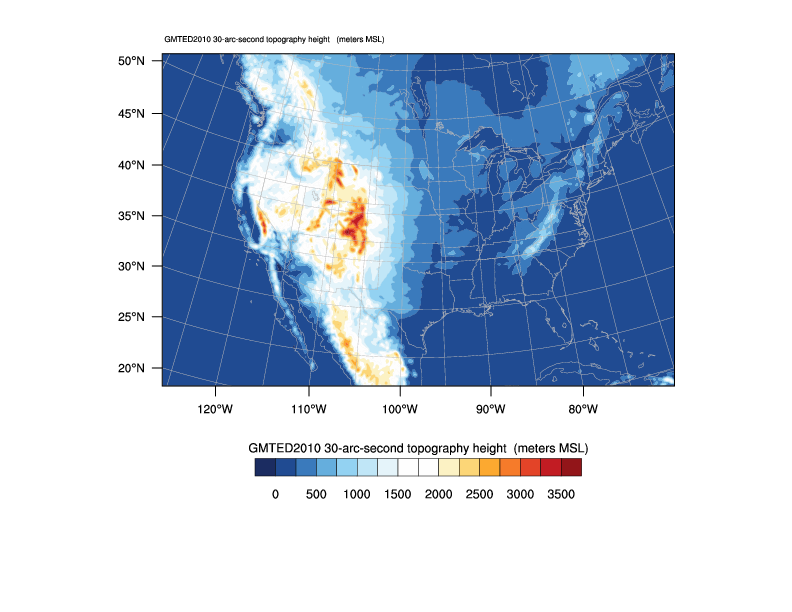
WRF Forecast Testing Extensive testing and evaluation of various physics options have been performed to ensure these schemes can realistically describe physical and dynamical processes in the atmosphere. The tested schemes pull heavily from the new contributions to the released version, while the CONUS suite is also included to allow comparisons with the package whose behavior is more thoroughly known. The WRF ARW tests are conducted for the winter period from February 1 to February 28, 2017, and for the spring period from May 1 to May 28 2017. - Domain Configuration: CONUS domain with 15-km resolution, as shown in figure below.-Grid Structure: 415 x 325 horizontal grid points 40 vertical levels with model top at 30 hPa Lambert-Conformal map projection - Initial and boundary conditions: GFS 0.25 degree GFS analyses are used to provide the initial and boundary conditions for each of the testing runs. Each single case is initialized daily at 0000UTC and run for 48-hour forecast. For both spring and winter, 28 cases are conducted for testing and evaluation. - Physics options A baseline test with the CONUS suite is conducted using both WRFV4.2 and WRFV4.3 for comparison to ensure the performance of WRFV4.3 is consistent with that of WRFV4.2. All the new physics options incorporated into WRFV4.3 are tested and compared with the baseline test. For each new physics option, 28 cases are tested for the spring and winter, respectivley. The new and modified physics options that have been tested are listed below: (1) The turbulence kinetic energy (TKE) and TKE dissipation rate based 1.5-order closure (EEPS) PBL parameterization (2) The updated version of P3 microphsyics scheme that includes a one-ice category, 3-moment ice option (3) The NTU (National Taiwan University) scheme that applies double moments for the liquid-phase and triple moments for the ice-phase hydrometeors together with the consideration for ice crystal shape and density variations. (4) The enhanced GWD parameterization developed by NOAA (5) The multilayer BEP and BEP+BEM urban canopy models (UCMs) coupled with the Yonsei University (YSU) planetary boundary layer parameterization (6) The new dynamic irrigation scheme implemented in NoahMP (7) The Implicit-Explicit Vertical Advection (IEVA) scheme - Verification All WRF results are initialized with and compared to 0.25 degree GFS surface and upper air analysis. Domain averaged BIAS and RMSE are calculated for conventional fields. The CONUS suite and the EEPS tests are also verified agaist in-situ observations.